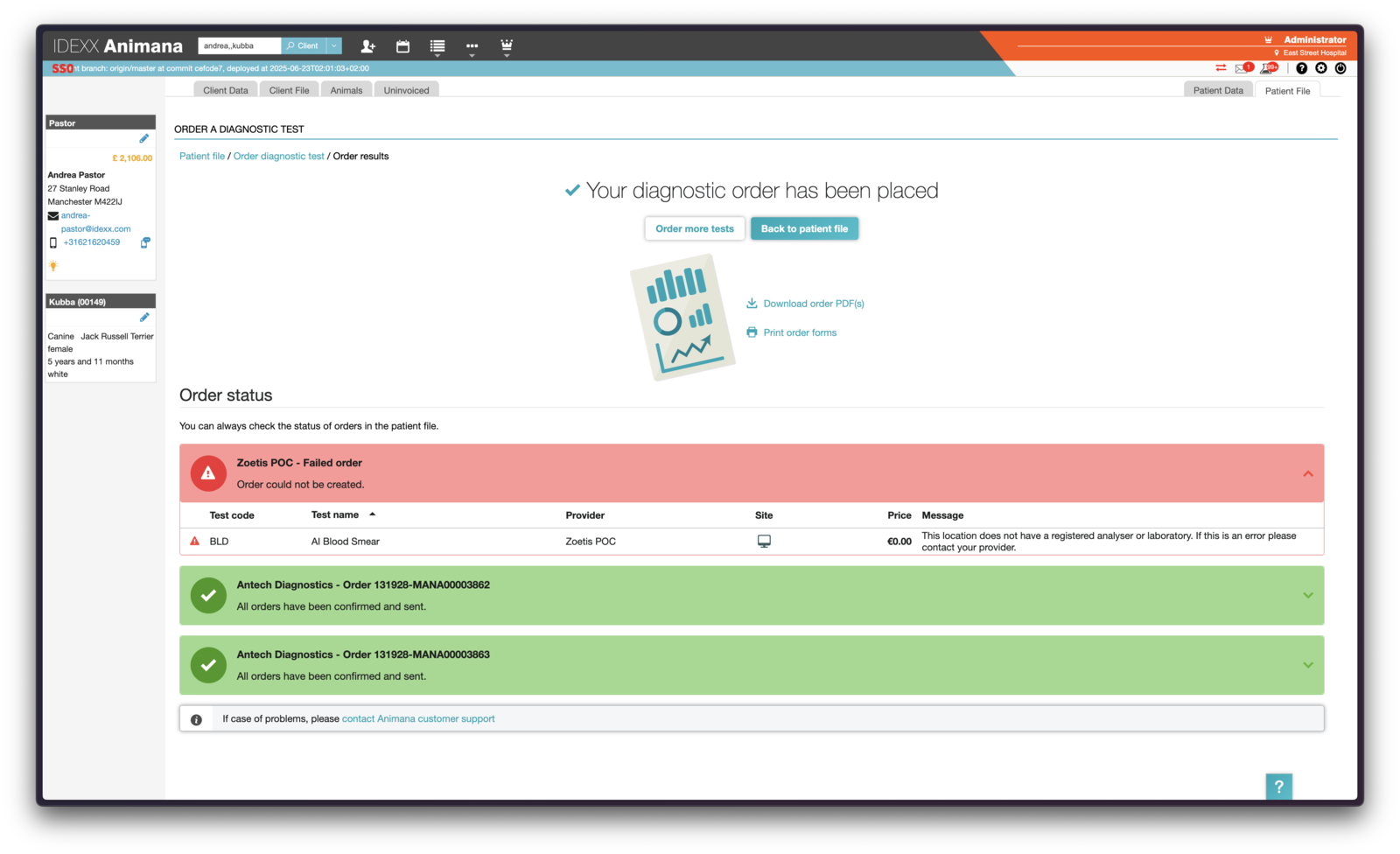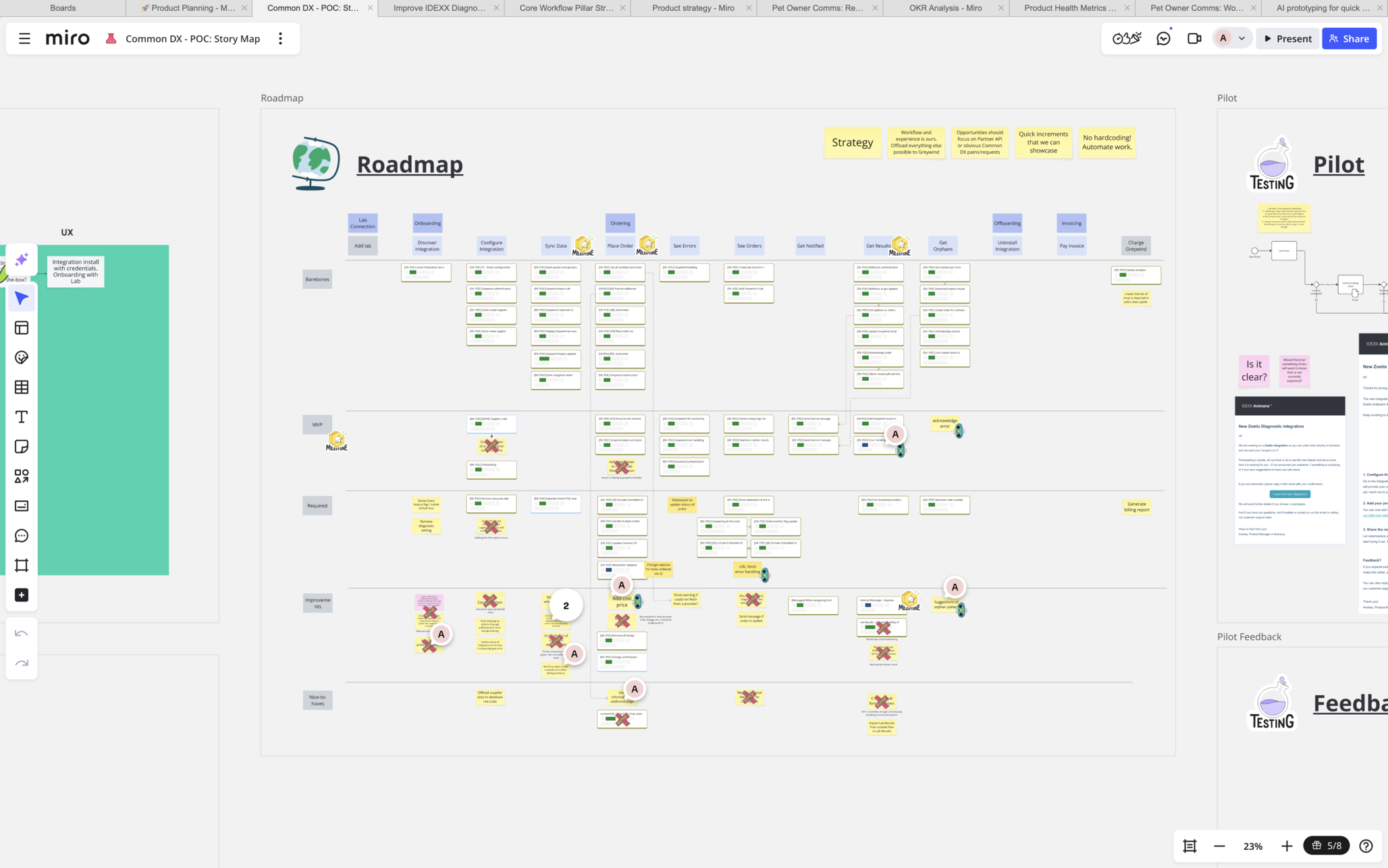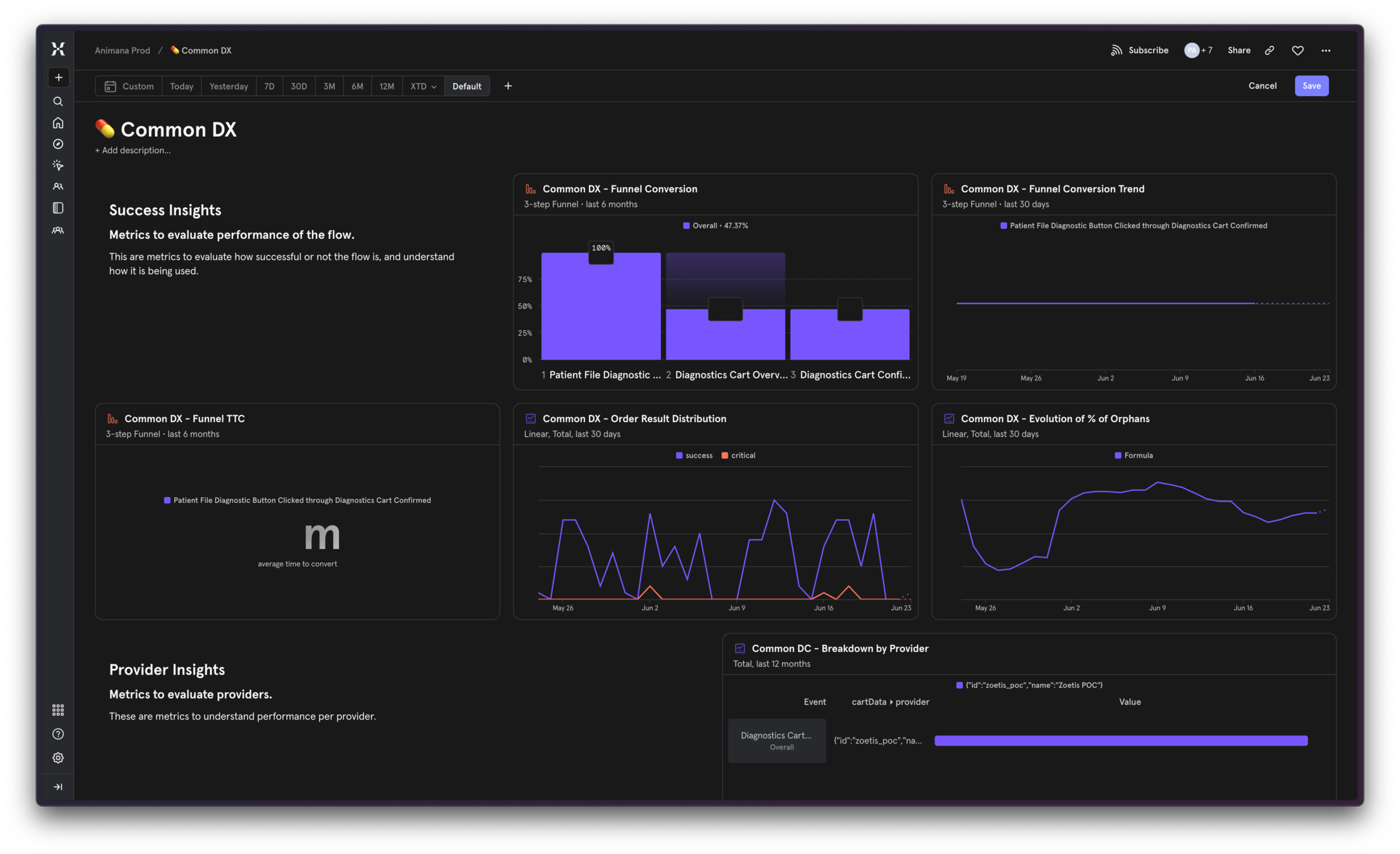
Transforming fragmented integrations into a scalable partner ecosystem
IDEXX Animana
Overview
Animana is a SaaS Veterinary Practice Management System. Its diagnostics ecosystem was fragmented and built upon an antiquated middleware system, causing 20% of customer support tickets. Diagnostic equipment suppliers were pressuring for integration access while clinics wanted multi-vendor flexibility. With each integration requiring custom development, creating a scalable system was impossible.
Goal
Transform fragmented diagnostic workflows into a scalable partner ecosystem that reduces technical debt and creates sustainable revenue growth, while improving the user experience for veterinarians.
Outcome
Delivered a common diagnostics platform that eliminated major support friction and established the foundation for ecosystem expansion through a strategic partnership. Successfully launched with first partner with a second integration completed and additional partners in progress.
My role
Product Manager
Methods
Business case analysis, ROI modeling, competitive analysis, stakeholder interviews, technical architecture review, partner evaluation, go-to-market strategy, analytics framework design.
Tools
Mixpanel
WalkMe
Typeform
HubSpot
Jira
Confluence
Postman
Year
2024-2025
Research
I conducted analysis of our current state and market pressures to better understand and define the problem and opportunities. I mapped the existing integration landscape and identified three core problems:
- Each diagnostic integration was custom-built with no shared code or user experience
- Antiquated middleware system caused 20% of customer support tickets
- Multiple diagnostic suppliers were pressuring for integration access
Business case analysis
I evaluated three potential solutions, working closely with developers to understand high-level effort and cost estimates:
- Build in-house platform: Complete control but highest development costs and longest time-to-market
- Partner with middleware provider: Leverages existing ecosystem, faster implementation, shared maintenance
- Continue custom integrations: Familiar approach but doesn't solve scalability or technical debt issues
I analyzed pricing models for each approach using existing contracts and estimated usage patterns. Using 3-year ROI projections with estimated partner onboarding timelines, development cost analysis including ongoing maintenance, and risk assessment of technical and business dependencies, the middleware provider partnership option provided the highest ROI despite dependency risks.
Strategy & implementation
Based on the analysis, I recommended the middleware partnership approach. This decision balanced multiple strategic considerations: economic impact through significantly better ROI, speed to market by avoiding lengthy custom development cycles, and ecosystem access with immediate connection to established analyzer network.
Launch strategy
I designed a pilot-first approach starting with a partner who was already integrated with our chosen middleware provider and had been actively seeking integration access. The go-to-market strategy focused on existing customers of this partner to minimize acquisition friction, while collaborating with their marketing team for co-branded outreach.

Project roadmap and implementation strategy developed in Miro
Analytics framework
To measure success and optimize the platform, I implemented tracking across the entire diagnostic workflow, measuring adoption rate across target customer segments, funnel conversion and time-to-complete for efficiency improvements, and orphan vs. regular result processing optimization.

Analytics dashboard tracking key platform metrics and user adoption
Key learnings
Strategic decision-making:
Doing a comprehensive pricing strategy analysis across different scenarios helped present confident recommendations to leadership. Looking back, I would have also done a positive vs. negative outlook comparison. In this case the ROI difference was significant enough that the decision would have remained the same, but it would have been a valuable exercise for future complex decisions.
Building scalable technical platforms:
Working with a legacy system meant we had to be ruthless about prioritization and think about long-term value over quick wins. For example, we decided to build webhook infrastructure even though it would take longer, because it would support every future project and fit with our strategic focus on ecosystem growth. The key was figuring out which foundational pieces were worth the extra investment versus what we could tackle later.